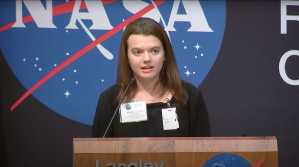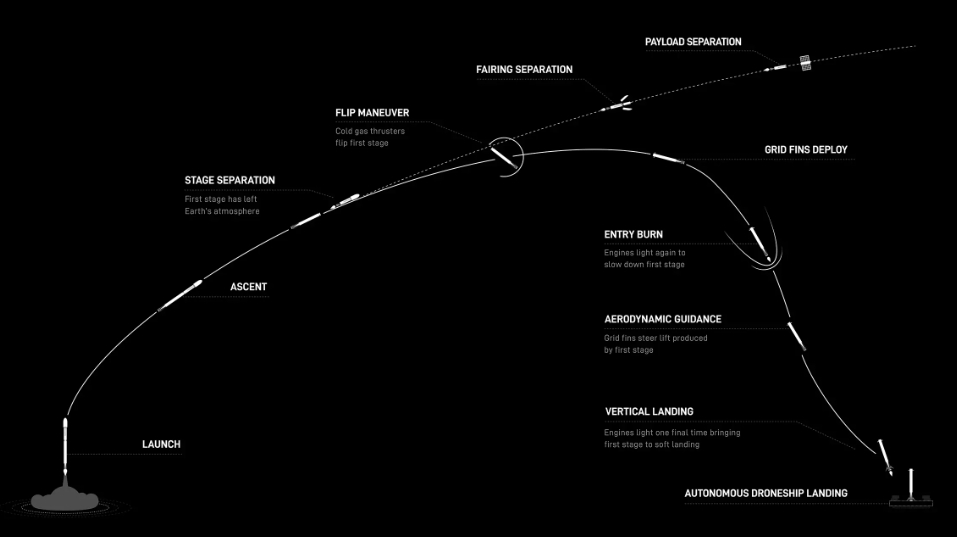10 min read
Preparations for Next Moonwalk Simulations Underway (and Underwater)
Faculty Advisors:
Dr. Guanyu Huang, Stony Brook University
Graduate Mentor:
Ryan Schmedding, McGill University
Ryan Schmedding, Graduate Mentor
Danielle Jones
Remote sensing of poor air quality in mountains: A case study in Kathmandu, Nepal
Danielle Jones, University of Wyoming
Urban activity produces particulate matter in the atmosphere known as aerosol particles. These aerosols can negatively affect human health and cause changes to the climate system. Measures for aerosols include surface level PM2.5 concentration and aerosol optical depth (AOD). Kathmandu, Nepal is an urban area that rests in a valley on the edge of the Himalayas and is home to over three million people. Despite the prevailing easterly winds, local aerosols are mostly concentrated in the valley from the residential burning of coal followed by industry. Exposure to PM2.5 has caused an estimated ≥8.6% of deaths annually in Nepal. We paired NASA satellite AOD and elevation data, model meteorological data, and local AirNow PM2.5 and air quality index (AQI) data to determine causes of variation in pollutant measurement during 2023, with increased emphasis on the post-monsoon season (Oct. 1 – Dec. 31). We see the seasonality of meteorological data related to PM2.5 and AQI. During periods of low temperature, low wind speed, and high pressure, PM2.5 and AQI data slightly diverge. This may indicate that temperature inversions increase surface level concentrations of aerosols but have little effect on the total air column. The individual measurements of surface pressure, surface temperature, and wind speed had no observable correlation to AOD (which was less variable than PM2.5 and AQI over the entire year). Elevation was found to have no observable effect on AOD during the period of study. Future research should focus on the relative contributions of different pollutants to the AQI to test if little atmospheric mixing causes the formation of low-altitude secondary pollutants in addition to PM2.5 leading to the observed divergence in AQI and PM2.5.
Madison Holland
Analyzing the Transport and Impact of June 2023 Canadian Wildfire Smoke on Surface PM2.5 Levels in Allentown, Pennsylvania
Madison Holland, University of Alabama in Huntsville
The 2023 wildfire season in Canada was unparalleled in its severity. Over 17 million hectares burned, the largest area ever burned in a single season. The smoke from these wildfires spread thousands of kilometers, causing a large population to be exposed to air pollution. Wildfires can release a variety of air pollutants, including fine particulate matter (PM2.5). PM2.5 directly affects human health – exposure to wildfire-related PM2.5 has been associated with respiratory issues such as the exacerbation of asthma and chronic obstructive pulmonary disease. In June 2023, smoke from the Canadian wildfires drifted southward into the United States. The northeastern United States reported unhealthy levels of air quality due to the transportation of the smoke. In particular, Pennsylvania reported that Canadian wildfires caused portions of the state to have “Hazardous” air quality. Our research focused on how Allentown, PA experienced hazardous levels of air quality from this event. To analyze the concentrations of PM2.5 at the surface level, NASA’s Hazardous Air Quality Ensemble System (HAQES) and the EPA’s Air Quality System (AQS) ground-based site data were utilized. By comparing HAQES’s forecast of hazardous air quality events with recorded daily average PM2.5 with the EPA’s AQS, we were able to compare how well the ensemble system was at predicting total PM2.5 during unhealthy air quality days. NOAA’s Hybrid Single-Particle Lagrangian Integrated Trajectory model, pyrsig, and the Canadian National Fire Database were used. These datasets revealed the trajectory of aerosols from the wildfires to Allentown, Pennsylvania, identified the densest regions of the smoke plumes, and provided a map of wildfire locations in southeastern Canada. By integrating these datasets, we traced how wildfire smoke transported aerosols from the source at the ground level.
Michele Iraci
Trends and Transport of Tropospheric Ozone From New York City to Connecticut in the Summer of 2023
Michele Iraci, University of Connecticut
Tropospheric Ozone, or O₃, is a criteria pollutant contributing to most of Connecticut and New York City’s poor air quality days. It has adverse effects on human health, particularly for high-risk individuals. Ozone is produced by nitrogen oxides and volatile organic compounds from fuel combustion reacting with sunlight. The Ozone Transport Region (OTR) is a collection of states in the Northeast and Mid-Atlantic United States that experience cross-state pollution of O₃. Connecticut has multiple days a year where O₃ values exceed the National Ambient Air Quality Standards requiring the implementation of additional monitoring and standards because it falls in the OTR. Partially due to upstream transport from New York City, Connecticut experiences increases in O₃ concentrations in the summer months. Connecticut has seen declines in poor air quality days from O₃ every year due to the regulations on ozone and its precursors. We use ground-based Lidar, Air Quality System data, and a back-trajectory model to examine a case of ozone enhancement in Connecticut caused by air pollutants from New York between June and August 2023. In this time period, Connecticut’s ozone enhancement was caused by air pollutants from New York City. As a result, New York City and Connecticut saw similar O₃ spikes and decline trends. High-temperature days increase O₃ in both places, and wind out of the southwest may transport O₃ to Connecticut. Production and transport of O₃ from New York City help contribute to Connecticut’s poor air quality days, resulting in the need for interstate agreements on pollution management.
Stefan Sundin
Correlations Between the Planetary Boundary Layer Height and the Lifting Condensation Level
Stefan Sundin, Iowa State University
The Planetary Boundary Layer (PBL) characterizes the lowest layer in the atmosphere that is coupled with diurnal heating at the surface. The PBL grows during the day as solar heating causes pockets of air near the surface to rise and mix with cooler air above. Depending on the type of terrain and surface albedo that receives solar heating, the depth of the PBL can vary to a great extent. This makes PBL height (PBLH) a difficult variable to quantify spatially and temporally. While several methods have been used to obtain the PBLH such as wind profilers and lidar techniques, there is still a level of uncertainty associated with PBLH. One method of predicting seasonal PBLH fluctuation and potentially lessening uncertainty that will be discussed in this study is recognizing a correlation in PBLH with the lifting condensation level (LCL). Like the PBL, the LCL is used as a convective parameter when analyzing upper air data, and classifies the height in the atmosphere at which a parcel becomes saturated when lifted by a forcing mechanism, such as a frontal boundary, localized convergence, or orographic lifting. A reason to believe that PBLH and LCL are interconnected is their dependency on both the amount of surface heating and moisture that is present in the environment. These thermodynamic properties are of interest in heavily populated metropolitan areas within the Great Plains, as they are more susceptible to severe weather outbreaks and associated economic losses. Correlations between PBLH and LCL over the Minneapolis-St. Paul metropolitan statistical area during the summer months of 2019-2023 will be discussed.
Angelica Kusen
Coupling of Chlorophyll-a Concentrations and Aerosol Optical Depth in the Subantarctic Southern Ocean and South China Sea (2019-2021)
Angelica Kusen, University of Delaware
Air-sea interactions form a complex feedback mechanism, whereby aerosols impact physical and biogeochemical processes in marine environments, which, in turn, alter aerosol properties. One key indicator of these interactions is chlorophyll-a (Chl-a), a pigment common to all phytoplankton and a widely used proxy for primary productivity in marine ecosystems. Phytoplankton require soluble nutrients and trace metals for growth, which typically come from oceanic processes such as upwelling. These nutrients can also be supplied via wet and dry deposition, where atmospheric aerosols are removed from the atmosphere and deposited into the ocean. To explore this interaction, we analyze the spatial and temporal variations of satellite-derived chl-a and AOD, their correlations, and their relationship with wind patterns in the Subantarctic Southern Ocean and the South China Sea from 2019 to 2021, two regions with contrasting environmental conditions.
In the Subantarctic Southern Ocean, a positive correlation (r²= 0.26) between AOD and Chl-a was found, likely due to dust storms following Austrian wildfires. Winds deposit dust aerosols rich in nutrients, such as iron, to the iron-limited ocean, enhancing phytoplankton photosynthesis and increasing chl-a. In contrast, the South China Sea showed no notable correlation (r² = -0.02) between AOD and chl-a. Decreased emissions due to COVID-19 and stricter pollution controls likely reduced the total AOD load and shifted the composition of aerosols from anthropogenic to more natural sources.
These findings highlight the complex interrelationship between oceanic biological activity and the chemical composition of the atmosphere, emphasizing that atmospheric delivery of essential nutrients, such as iron and phosphorus, promotes phytoplankton growth. Finally, NASA’s recently launched PACE mission will contribute observations of phytoplankton community composition at unprecedented scale, possibly enabling attribution of AOD levels to particular groups of phytoplankton.
Chris Hautman
Estimating CO₂ Emission from Rocket Plumes Using in Situ Data from Low Earth Atmosphere
Chris Hautman, Hanover College
Rocket emissions in the lower atmosphere are becoming an increasing environmental concern as space exploration and commercial satellite launches have increased exponentially in recent years. Rocket plumes are one of the few known sources of anthropogenic emissions directly into the upper atmosphere. Emissions in the lower atmosphere may also be of interest due to their impacts on human health and the environment, in particular, ground level pollutants transported over wildlife protected zones, such as the Everglades, or population centers near launch sites. While rockets are a known source of atmospheric pollution, the study of rocket exhaust is an ongoing task. Rocket exhaust can have a variety of compositions depending on the type of engine, the propellants used, including fuels, oxidizers, and monopropellants, the stoichiometry of the combustion itself also plays a role. In addition, there has been increasing research into compounds being vaporized in atmospheric reentry. These emissions, while relatively minimal compared to other methods of travel, pose an increasing threat to atmospheric stability and environmental health with the increase in human space activity. This study attempts to create a method for estimating the total amount of carbon dioxide released by the first stage of a rocket launch relative to the mass flow of RP-1, a highly refined kerosene (C₁₂H₂₆)), and liquid oxygen (LOX) propellants. Particularly, this study will focus on relating in situ CO₂ emission data from a Delta II rocket launch from Vandenberg Air Force Base on April 15, 1999, to CO₂ emissions from popular modern rockets, such as the Falcon 9 (SpaceX) and Soyuz variants (Russia). The findings indicate that the CO₂ density of any RP-1/LOX rocket is 6.9E-7 times the mass flow of the sum of all engines on the first stage. The total mass of CO₂ emitted can be further estimated by modeling the volume of the plume as cylindrical. Therefore, the total mass can be calculated as a function of mass flow and first stage main engine cutoff. Future CO₂ emissions on an annual basis are calculated based on these estimations and anticipated increases in launch frequency.






